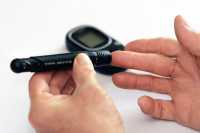
09 Jul What Accounts for Increase in National Spending on Antidiabetic Drugs?
MedicalResearch.com Interview with:
Xiaohui Zhuo, PhD
Division of Diabetes Translation
National Center for Chronic Disease Prevention and Health Promotion
Centers for Disease Control and Prevention,
Atlanta, GA
MedicalResearch.com: What is the background for this study?
Response: Prescription drug spending (spending from families and individuals, their medical providers (doctors, hospitals, pharmacies, etc.) and employees across the United States) has increased at a much higher rater than other components of the total medical expenditure associated with diabetes. The share of spending on prescription drugs in per capita annual excess expenditure due to diabetes increased from 27% to 41% between 1987 and 2011, according to a previous study using national data from the Agency for Healthcare Research and Quality Medical Expenditures Panel Surveys.
In this most recent study, CDC researchers estimated the increase in the national spending on antidiabetic drugs from 2005 to 2016 in total and by drug class and broke down the increase in total national spending by examining what factors have contributed to the increase estimating the magnitude of each factor’s contribution.
MedicalResearch.com: What are the main findings?
Response: Overall we found that:
- Between 2005 and 2016, annual total expenditure on antidiabetic drugs increased from $15.3 billion to $53.1 billion.
- Expenditure on non-insulin drugs increased from $11 billion to $22 billion, while expenditure on insulin increased from $4 billion to $31 billion.
- Of the total increase (247%, $37.8 billion), 177% ($27.1 billion) was due to insulin, 70% ($10.7 billion) was due to Non-insulin drugs.
- Of the total (177%, $27.1 billion) increase due to insulin, more than 154% ($23.5 billion) was due to Analog, 18% ($2.8 billion) due to Human, and 5% ($0.8 billion) due to premixed.
MedicalResearch.com: What should readers take away from your report?
Response: Additional underlying factors that could be contributing to the increase in antidiabetic drug spending (e.g. shifts in policy, pricing, etc.) remain unclear.
-
- Most of the increase was due to expenditure on insulin, mainly analog insulin.-
- Spending on newer non-insulin drugs increased at a much higher rate than the spending decrease on in older noninsulin drugs, which led a net increase in spending on all non-insulin drugs.-
- Higher expenditure per user was the main driver for the increase in expenditure on insulin.-
- Increases in spending on non-insulin drugs resulting from more users offset the decrease in spending resulting from a lower expenditure per user, which led to the overall increase in expenditure on non-insulin drugs.-
MedicalResearch.com: Is there anything else you would like to add?
Response: The CDC used drug expenditures in Medical Expenditure Panel Survey, a nationally representative survey of the civilian noninstitutionalized population.
Citation:
Oral Presentations: Clinical Diabetes/Therapeutics
11-OR: What Has Contributed to the Increase in the National Spending on Antidiabetic Drugs: 2005-2016?
XILIN ZHOU, SUNDAR SHRESTHA, HUI SHAO and PING ZHANG
Diabetes 2019 Jun; 68(Supplement 1): -.https://doi.org/10.2337/db19-11-OR
[wysija_form id=”3″]
[last-modified]
The information on MedicalResearch.com is provided for educational purposes only, and is in no way intended to diagnose, cure, or treat any medical or other condition. Always seek the advice of your physician or other qualified health and ask your doctor any questions you may have regarding a medical condition. In addition to all other limitations and disclaimers in this agreement, service provider and its third party providers disclaim any liability or loss in connection with the content provided on this website.
Last Updated on July 9, 2019 by Marie Benz MD FAAD
